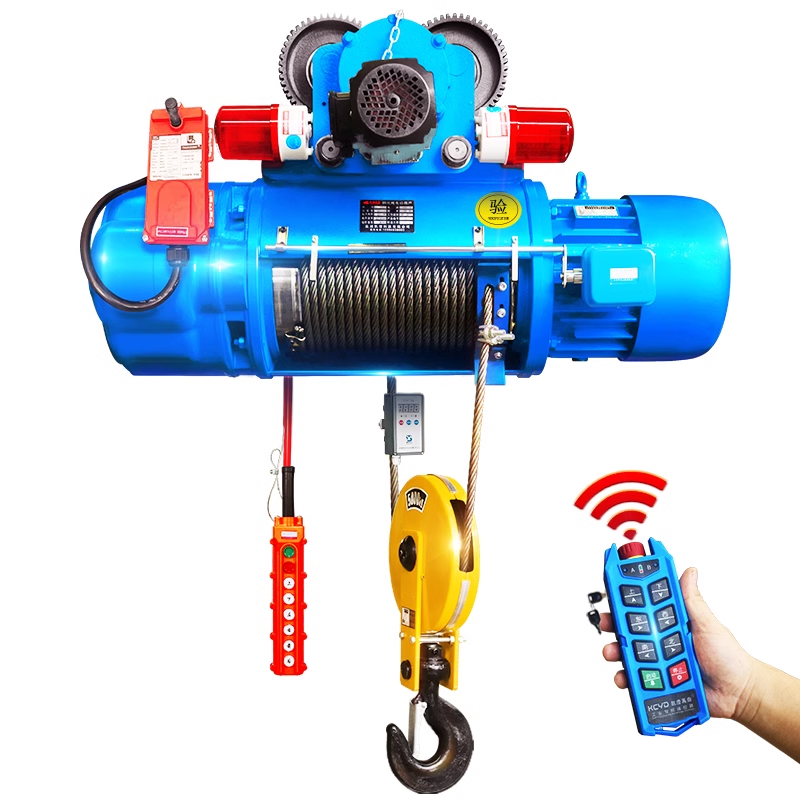Can a chain hoist be used for horizontal pulling or dragging

Chain hoists are not designed for horizontal dragging operations. Forcibly using them for lateral pulling may cause equipment damage and safety incidents. Below are detailed explanations and safety recommendations
Why can’t chain hoists be used for horizontal dragging?
1.Structural design limitations
- The motor and gearbox of chain hoists are designed exclusively for vertical lifting.
- Horizontal pulling forces cause abnormal engagement between the chain and sprocket, accelerating wear.
- The hook bearing is not designed to withstand lateral forces and may fracture.
2.Safety Risks
- May cause chain skipping, jamming, or even breakage
- Motor overload burnout (horizontal resistance is unpredictable)
- Mounting brackets bear forces in unintended directions, risking detachment
3.Performance Issues
- No horizontal guiding mechanism, resulting in unstable movement
- Braking system is designed for vertical loads, offering poor braking performance in horizontal direction
Precautions for temporary horizontal pulling under special circumstances
If temporary short-distance horizontal movement is absolutely necessary, strictly adhere to the following:
1.Load Limit
- Do not exceed 30% of the rated load
- Single movement distance must not exceed 2 meters
2.Operating Specifications
- Maintain the angle between the chain and the ground at greater than 60 degrees
- Use guide pulleys to alter the force direction
- Operate slowly and steadily to avoid impact
3.Protective Measures
- Install Anti-Sway Devices
- Lay Rollers on the Ground to Reduce Friction
- Assign a Dedicated Person to Monitor Chain Condition
Professional Horizontal Pulling Alternative
1.Electric Towing Machine
- Electric Winch Specifically Designed for Horizontal Pulling
- Equip with Horizontal Guide Wheels and Dedicated Towing Wire Rope
2.Modification of Hand Chain Hoist
- Select Special Models with Horizontal Rollers
- Use in Conjunction with I-Beam Tracks
3.Hydraulic Pushing System
- Ideal Solution for Heavy-Duty Horizontal Movement
- Precise Control of Movement Speed and Position
Potential Consequences of Improper Horizontal Pulling
1.Equipment Damage
- Chain Deformation / Sprocket Tooth Breakage
- Motor Burnout (Repair Costs Up to 60% of New Machine Price)
2.Voided Warranty
- Most Manufacturers Explicitly Prohibit Horizontal Pulling
- Resulting Damage Is Not Covered Under Warranty
Proper Usage Recommendations
1.Strictly Follow Designated Applications
- Vertical Lifting: Optimal Working Condition
- Minor-Angle Side Pulling: Angle >75° (Load Must Be Reduced)
2.Select Dedicated Equipment
- Choose a Trolley Hoist for Frequent Horizontal Movement
- Combine with a Lifting Trolley and Rail System
3.Key Training Points
- Incorporate Horizontal Pulling Prohibition into Safety Protocols
- Install Warning Labels on Equipment
IMPORTANT NOTICE: For genuine horizontal movement requirements, contact the equipment manufacturer for customized solutions or use professional horizontal towing equipment. Never risk violating operating regulations.














